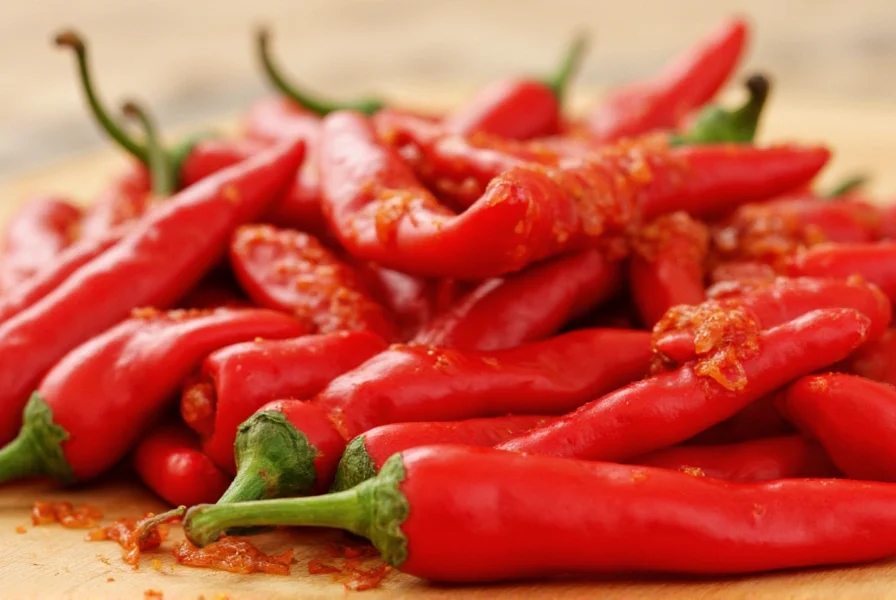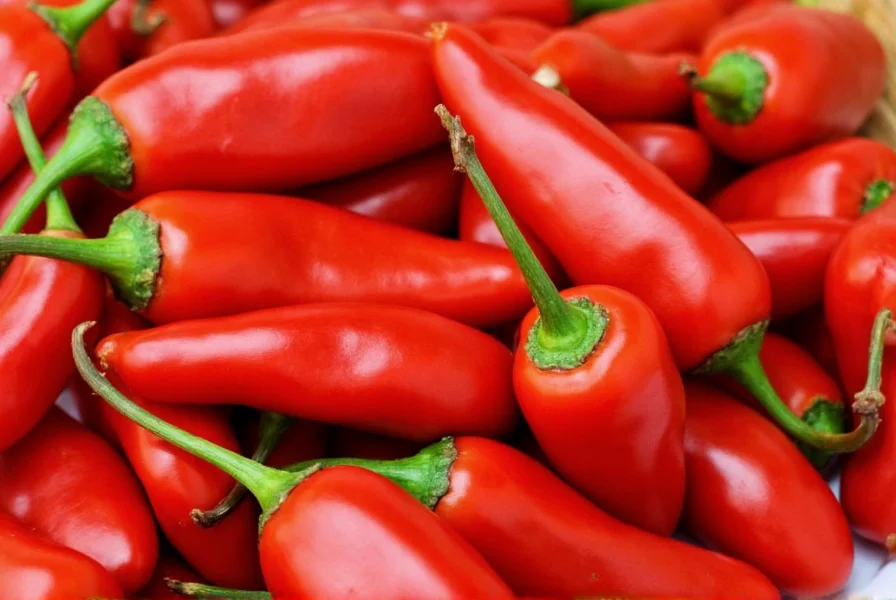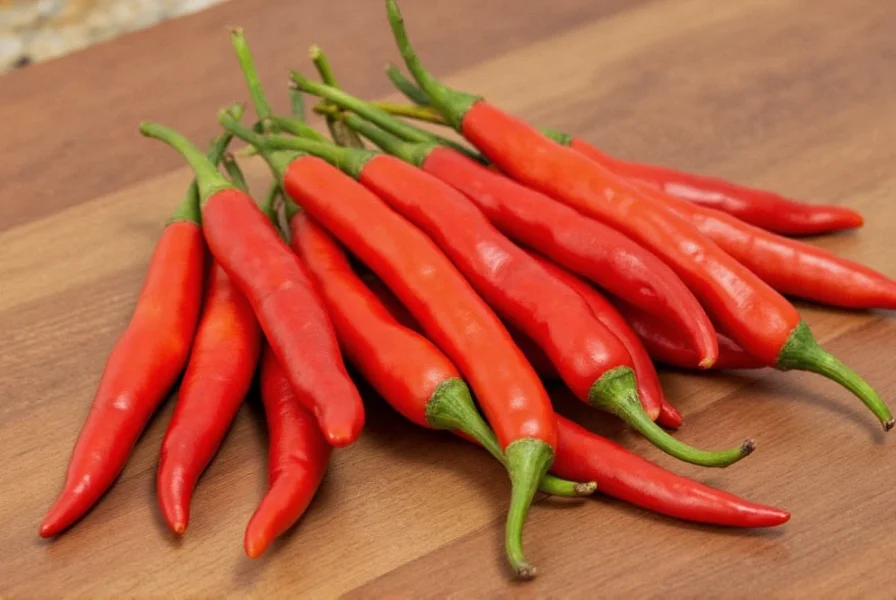Cayenne pepper hot sauce stands as one of the most versatile and accessible spicy condiments in global cuisine. Unlike artisanal hot sauces featuring obscure peppers, cayenne-based varieties offer consistent heat and bright flavor that works across numerous culinary applications. The distinctive kick comes from matured cayenne peppers, usually blended with vinegar, salt, and sometimes garlic or other complementary spices.
Understanding exactly how hot cayenne pepper hot sauce ranks requires examining the Scoville scale. While pure cayenne pepper ranges from 30,000 to 50,000 SHU, the final hot sauce product typically lands between 2,000 to 15,000 SHU after dilution with vinegar and other ingredients. This places it above popular sauces like Tabasco (2,500–5,000 SHU) but well below extreme options like ghost pepper sauces (855,000–1,041,427 SHU).

The Science Behind Cayenne's Heat Profile
Capsaicin, the active compound in cayenne peppers, triggers thermoreceptors in your mouth that interpret the sensation as heat. What makes cayenne pepper hot sauce unique is its relatively immediate heat response compared to delayed-heat peppers like habaneros. The burning sensation typically peaks within 30 seconds of consumption and subsides relatively quickly, making it more manageable for moderate spice enthusiasts.
Interestingly, cayenne's heat distribution differs from other popular hot sauce bases. While habanero sauces often deliver fruity undertones beneath intense heat, cayenne offers a cleaner, more straightforward burn with subtle earthy notes. This characteristic makes cayenne pepper hot sauce particularly valuable for recipes where you want heat without dramatically altering the flavor profile.
Comparative Heat Analysis
| Hot Sauce Type | Scoville Heat Units | Heat Characteristic | Flavor Profile |
|---|---|---|---|
| Cayenne Pepper Hot Sauce | 2,000–15,000 | Immediate, sharp burn | Clean, slightly earthy |
| Sriracha | 1,000–2,200 | Gradual, moderate heat | Sweet, garlicky |
| Habanero Sauce | 100,000–350,000 | Delayed, intense burn | Fruity, floral |
| Ghost Pepper Sauce | 855,000–1,041,427 | Delayed, extreme burn | Smoky, sweet |
Practical Culinary Applications
When considering cayenne pepper hot sauce uses, its versatility shines across multiple cooking techniques. Unlike specialty hot sauces designed for specific applications, cayenne-based varieties work effectively in:
- Marinades - The vinegar content helps tenderize proteins while the capsaicin enhances flavor absorption
- Sauces and dressings - Adds heat without overwhelming other flavors
- Roasted vegetables - Toss root vegetables with cayenne sauce before roasting for spicy caramelization
- Breakfast dishes - A few drops elevates eggs, avocado toast, or breakfast potatoes
Professional chefs often prefer cayenne pepper hot sauce for consistent heat levels across batches. Unlike fresh peppers which vary in spiciness based on growing conditions, commercial cayenne sauces maintain standardized heat profiles. This reliability makes it valuable for recipe development where precise spice levels matter.
Creating Homemade Cayenne Pepper Hot Sauce
For those interested in a cayenne pepper hot sauce recipe, the basic components remain remarkably simple. A traditional homemade version requires just four ingredients:
- 1 cup fresh or dried cayenne peppers
- 1 cup distilled white vinegar
- 1 teaspoon salt
- 1 clove garlic (optional)
The preparation process involves simmering the peppers in vinegar for 10-15 minutes, then blending until smooth. For a more complex flavor profile, some home sauce makers ferment the peppers for 1-2 weeks before processing. Always wear gloves when handling fresh cayenne peppers, and avoid touching your face during preparation.

Health Considerations and Benefits
Research suggests potential cayenne pepper hot sauce benefits extend beyond flavor enhancement. Capsaicin has demonstrated several physiological effects:
- Metabolic boost - May temporarily increase metabolic rate by up to 5%
- Pain relief - Topical capsaicin is used in some pain relief creams
- Circulation improvement - Causes temporary vasodilation
- Appetite regulation - Some studies suggest it may help with satiety
However, individuals with gastrointestinal sensitivities should exercise caution. The acidity from vinegar combined with capsaicin can aggravate conditions like acid reflux or irritable bowel syndrome. As with any spicy food, moderation remains key when incorporating cayenne pepper hot sauce into your diet.
Proper Storage and Shelf Life
Understanding cayenne pepper hot sauce shelf life ensures both safety and optimal flavor. Commercial varieties typically maintain quality for 2-3 years when unopened and stored in a cool, dark place. Once opened, refrigeration extends freshness to 6-12 months. Homemade versions have shorter shelf lives—typically 1-3 months refrigerated—due to the absence of commercial preservatives.
Signs your cayenne pepper hot sauce has spoiled include:
- Mold growth on the surface or inside the bottle
- Significant color change (particularly darkening)
- Off smells beyond the characteristic vinegar aroma
- Separation that doesn't recombine with shaking
For longest shelf life, always use clean utensils when handling hot sauce to prevent bacterial contamination. The high acidity naturally preserves the product, but proper handling remains essential for food safety.











 浙公网安备
33010002000092号
浙公网安备
33010002000092号 浙B2-20120091-4
浙B2-20120091-4